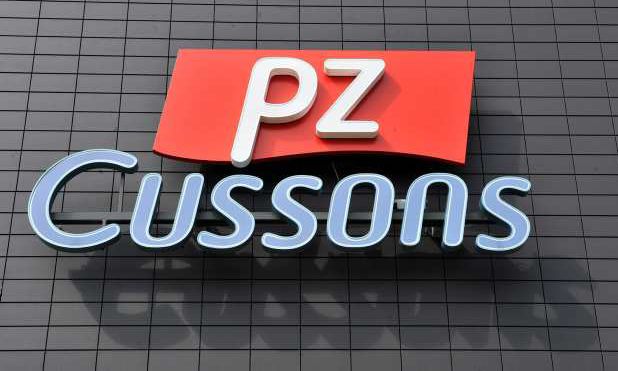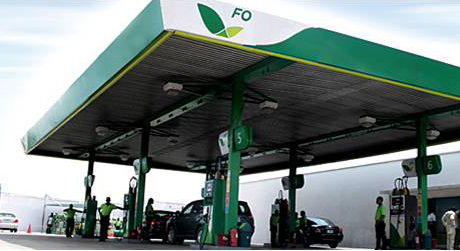Brokers and dealers hail the President during his visit to the Nigerian Stock Exchange in Lagos, March 12
The concluding part of earnings outlook of companies for the 2015 financial year still indicates a general loss of profit capacity across sectors and industries. Most companies lost considerable ability to grow profit in 2015 and this largely explains the bearish trend in the equities market.
Despite the general operating difficulties, earnings prospects differ across sectors and industries. While loss of sales revenue, profit drops and inability to pay dividends would be the summary of the 2015 company operations, a few companies and industries can be expected to defy the general picture.
Conglomerates
Conglomerates normally have the advantage of diversified operations: using highly growing markets to compensate for slowly growing areas and thus maintain overall stable growth. This expectation isn’t just working out that simply for the operators any more. Each market segment now presents sufficient challenges within it, making it almost impossible for any line of operation to counter the weaknesses elsewhere.
In the current state of operations, it has become doubtful if engagement in various lines of businesses – the so called diversified operations is a source of strength or weakness. Apparently, more operating fronts are turning in losses than profits, which is undermining the few strong operating lines.
Advertisement
The operating records of conglomerates fluctuated virtually in the same manner as single market-focused companies as per the interim reports in 2015. Only the operators with low interest payment burden are likely to be able to defend profit in a situation of inability to grow sales volume – which affected all the members of this group last year.
Food/beverages
Food and beverage companies faced highly a competitive market in 2015. The consumer market was flooded with imports and was again constrained by low consumer demand capacity. The economy has come to a stage where a large segment of the consumer market has been lost by the operators here due to inability to afford basic consumer goods. This segment of the market has since been switching over to local substitutes or is avoiding a number of consumer stuff that used to be taken for granted on family tables.
The target market here has shifted to the upper segments where competition with imported products has intensified. A tight selling market and high operating cost worked adversely on margins last year and only a few companies with ruling household product names and others free from debt and interest payment burdens are likely to maintain stable profit growth in the 2015 results being expected.
Advertisement
Pharmaceuticals
Pharmaceutical companies are on the losing side of competition in a market that is highly price sensitive. They are easily knocked out for their higher prices as consumers struggle to spread thin resources to cover several basic needs. For this reason, the cheaper imported drugs and even fake products tend to win the consumers’ votes when it comes to who makes the sale.
Pharmaceutical companies are therefore not likely to see a strong growth in sales revenue in 2015 and the ability to grow profit is likely to be affected by rising operating expenses driven by interest charges. Some of the companies here have diversified into the food sector, which has equally become highly competitive. Despite their basic nature, neither food nor medicines can be expected to guarantee a reasonable improvement in sales volume and revenue for the operators in 2015.
Insurance
The insurance industry has not been able to establish earnings stability and operators generally exhibit rise and fall patterns in revenue and profit from year to year. The business is facing the challenges of a general slowdown in the economy, which is impacting performance by way of non-growing revenue and rising operating expenses. Companies tend to be differently affected from year to year by the dynamic changes in the cost-income relationship inherent in the business.
This situation gives rise to an operating climate in the insurance sector where companies swing back and forth between profit and loss on a continuing basis. There is no general earnings pattern for the operators. The year of a major profit drop for one company can be one of a big rebound for another depending on the specific cost and revenue challenges in the particular year. Specific company factors need to be studied to have a clear view of likely earnings outcomes for any company in this sector for the 2015 operations.
Advertisement
Petroleum
Petroleum marketers faced the challenges of inability to grow sales revenue and the delays in payment of subsidies by government. The upstream companies are under pressure from the decline in crude oil prices in the international market. For most companies, sales revenues have kept falling even below the levels attained before the last adjustment of pump prices, which indicates the extent of the difficulties facing the business.
These challenges warranted high dependence on bank borrowings last year, resulting in high finance charges and generally declining profit margin. In the midst of declining sales, petroleum marketers were unable to cut costs, mainly interest expenses. Bank borrowings became a critical element of the operations in the sector and with declining revenue, companies devoted increasing proportions of revenue to interest expenses. This led to a general decline in profit margin in the petroleum sector in the year. Major loss of sales revenue and profit is therefore likely to mark the full year results of petroleum companies for the 2015 financial year.







